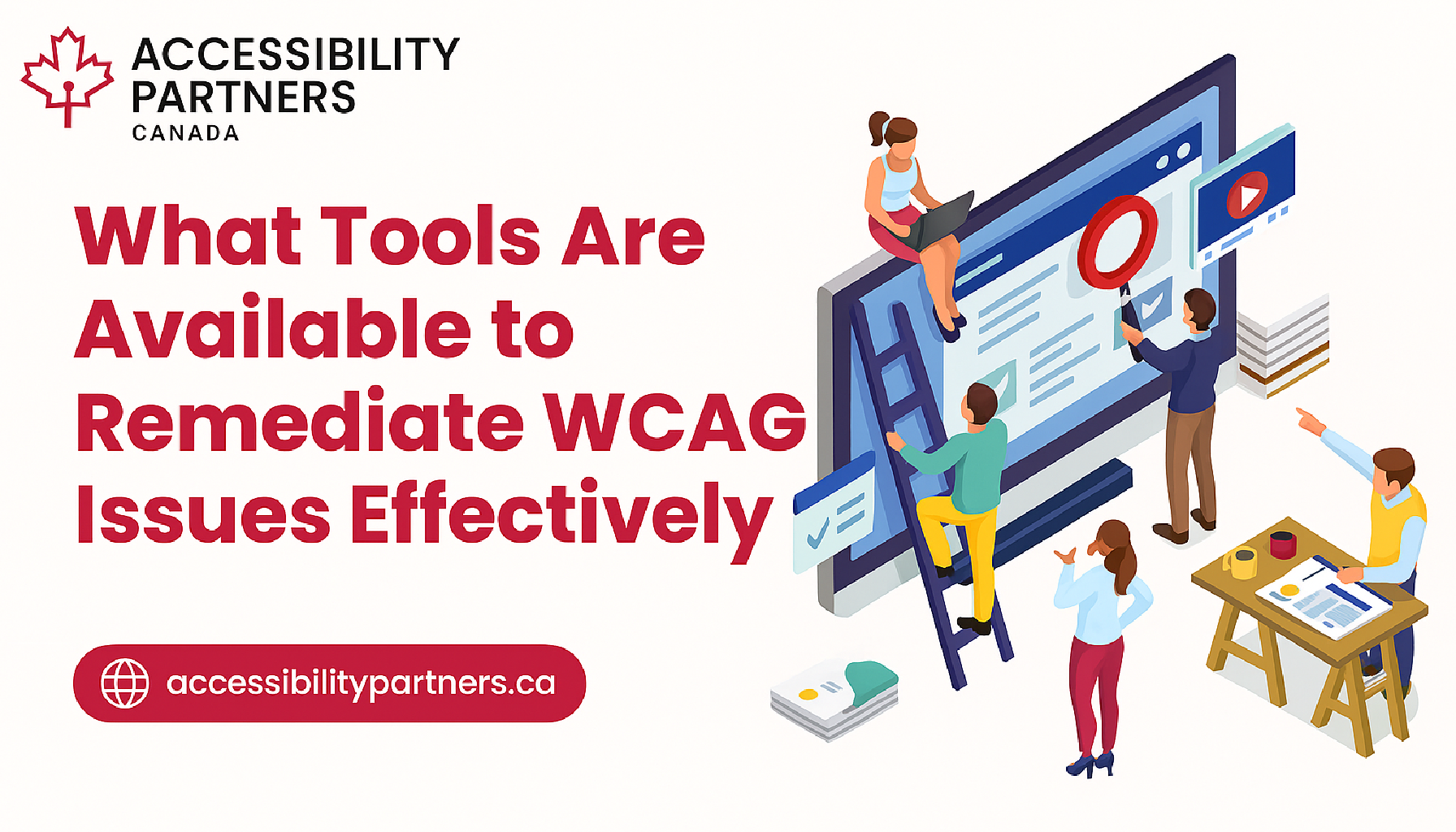Introduction
Anytime you see a medical professional, you hope for fair treatment:
- You hope for proper bedside manner
- You hope for an understanding of your concerns
- You hope for a reliable course of action
However, the increase in digital communication and services for healthcare means that disabled people become limited to the quality of their treatment if they cannot access those digital resources effectively. Therefore public and private healthcare providers in Ontario must prioritize accessibility to meet the needs of all patients and clients.
Digital accessibility standards for healthcare providers
Like most public and private sectors, healthcare providers have also transitioned many aspects of their services to the digital realm. From scheduling appointments to accessing medical records, the convenience of these online offerings is undeniable.
However, ensuring these services are accessible to everyone, including individuals with disabilities, is equally vital. This is where the Accessibility for Ontarians with Disabilities Act (AODA) comes into play.
The AODA requires all organizations with at least one employee to abide by its guidelines. This includes healthcare facilities such as:
- Hospitals
- Doctors’ offices
- Walk-in clinics
- Wellness centers
- Pharmacies
- Labs
- Health regulatory colleges
AODA guidelines (such as the requirements for websites) set the framework for accessibility in Ontario, and healthcare providers are expected to comply. This means that websites, applications, and digital documents must be designed and maintained with accessibility in mind, like ensuring:
- All images contain alternative text (alt-text) for assistive technology to comprehend.
- Headers are organized in an appropriate hierarchy for easy navigation.
- The digital content is navigable by a keyboard or mouse.
One of the core principles of AODA guidelines is ensuring that digital content is perceivable, operable, understandable, and robust for all users, regardless of their abilities. For healthcare providers, this translates to:
1. Perceivability
Ensure that all digital content (including text, images, videos, and interactive elements) is easily perceivable by individuals with disabilities. This includes providing alternative text for images, closed captioning for videos, and text to supplement non-text content such as providing a transcript for video or audio content.
2. Operability
Make digital interfaces, such as websites and applications, functional and easy to navigate for individuals using assistive technologies like screen readers or voice commands. This involves optimizing keyboard navigation, using focus indicators, and ensuring all interactive elements are accessible.
3. Understandability
Design digital content and interfaces in a way that is easy to understand for all users. This includes providing clear and concise instructions, avoiding jargon or complex language, and organizing information logically.
4. Robustness
Ensure digital content remains accessible as technologies evolve. Healthcare providers must stay up-to-date with the latest accessibility standards and ensure their digital assets remain compatible with assistive technologies and new devices.
AODA guidelines matter to private healthcare in Ontario, too
Since the law was enacted in 2005, officials have emphasized the importance of its new standards to improve accessibility in its province. As AODA compliance is mandatory for all public and private sectors, healthcare providers are expected to conform to its standards. However, there are beneficial reasons behind compliance:
1. Legal Compliance
AODA is a legal framework, and non-compliance can result in significant fines and penalties. Fines can be as high as $100,000 per day if an organization fails to address the discrepancies.
2. Inclusivity
Accessibility is a fundamental right. By following AODA guidelines, healthcare providers ensure that individuals with disabilities are not excluded from accessing their services. This promotes inclusivity and equal access to healthcare.
3. Enhanced Patient Experience
Accessible digital services improve the overall patient experience. Patients can easily schedule appointments, access medical records, and communicate with healthcare providers, leading to more efficient and patient-centric care.
4. Reputation and Trust
Healthcare providers that prioritize accessibility build trust with their patients and the community. It demonstrates a commitment to providing quality care to all individuals, regardless of their abilities.
5. Market Expansion
Accessible digital services can expand a healthcare provider’s market reach. Individuals with disabilities and their friends and family are more likely to choose providers that prioritize accessibility.
Public and private healthcare providers can enhance accessibility by following the AODA
In an era where healthcare intersects with technology, AODA guidelines are a compass pointing healthcare providers toward inclusivity and accessibility. AODA is more than just a set of rules; it represents a commitment to providing equitable care to all individuals, regardless of their abilities.
By embracing these guidelines, healthcare providers not only ensure legal compliance but also enhance patient experiences, build trust, and expand their reach in an increasingly diverse and digital world. In a healthcare landscape where accessibility is paramount, AODA guidelines are the key to unlocking a healthier and more inclusive future for all.
Let us review your accessibility standards and help discover how to make your practice more accessible by submitting the contact form below.







